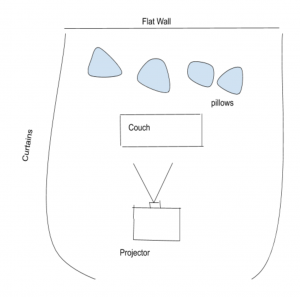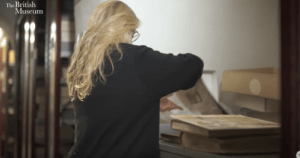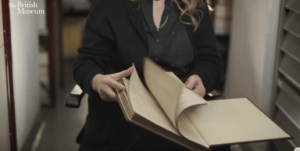PROPOSAL for Living Museum of the West Project
Sizzle Reel: Cel https://drive.google.com/open?id=1zWDGHYjm1_0U7V4ZJFx3B_Q4BW_8ho31
All the footage used in the sizzle reel was shot at the Living Museum. For the purposes of this assignment we have used filler music which will be replaced with a soundscape for our final submission. We have also used working opening and closing titles, again these will be updated for our final submission.
The overall purpose and vision behind the reel is to create intrigue about a place that knows so much about its community, yet its community knows nothing about this place. Our aim is to emphasise how important the Museum is, it’s benefits and purpose and encourage a new and fresh group of faces to invest in it.
| 1. | · Names of Group Members
Cel, Jess, Sarah & Leah |
||||||||||
| 2. | · Title of the Project
All members worked on |
||||||||||
| 3. | · Tagline
Your History Mate The Life of the Living Museum of the West The heart of culture in the West since 1984 The museum in the West The museum you should know about All members worked on |
||||||||||
| 4. | · Synopsis
Buried behind the trees lining the Maribyrnong river, The Living Museum of the West thrives. This quaint community hub plays host to the history and untold stories of Melbourne’s western suburbs. Every nook and cranny of the museum is filled with images and artifacts from the area. Yet, the majority of the community is oblivious to its existence. This piece explores how this place and it’s dedicated volunteers have evolved along with the community. Cel |
||||||||||
| 5. | · Rationale: Our reasons for making this film are influenced by how much potential we believe the museum has to offer – by communicating its cultural importance and telling the museum’s story we hope to attract newcomers and visitors who can sustain the life of the Living Museum. We want this project to encourage conversation and interest around the Museum and further, the West’s rich and extensive history and how it’s all documented in Melbourne’s backyard. We are further influenced by the team who run the museum – their passion and efforts to awaken a sense of community and sustain a culturally significant space are reflective of the Museum’s importance and room for change and growth within its impact. We aim to present these important people to the public and add a personal connection to what we make – moving away from corporate publicity videos – we want people to watch the video and come to the Museum for the resources it provides through its archive as well as through the members who have so much knowledge to share. In our own way its a form of giving back to the museum team who have done so much for our group but broader than that, have done such important and vital work within their community that seems to largely go unnoticed.
Leah |
||||||||||
| 6. | · Target Audience
We want to target people who live in the west or potential local sponsors and encourage them to visit and invest in the museum. We’ll be showing how the Living Museum works and what it does for the community members. Older residents who have a vested interest in the areas history or those who want to learn about their heritage would find this documentary pleasing. There is another audience we want to target a niche audience member may be a younger generation of males and females aged 20-30 who are beginning to populate the area due to the building development. They may have a vested interest in learning about the Museum or contributing materials about things that are happening now. Cel |
||||||||||
| 7. | · Background research about the subject matter.
Leah |
||||||||||
| 8. | · Description of your project
Our project is a documentary film exploring the history of the museum as well as exploring the personality and heart behind the museum. It will include interviews with staff members, visiting their work spaces and exploring their day to day activities, as well as archival material and footage sourced from inside the museum. It would be around 8-10 mins, as we want to be extensive with the Museum History yet condense it simultaneously to be more digestible. We took it as a formal introduction film of the Museum so it may be lengthy. As for our interview, we will interview about how the museum was built, what it was built for and what it can do, and what impact it has on the outside world. Many of our interviews with museum staff are about why they come to work in this museum, what their daily work is like, and how they’ve gained experience from this museum. There would be 3 or 4 interviews in our film that about we interviewing the staff at Museum. At week 5 we had already interviewed one staff member and from this had an idea of the lighting and colour of our project and how we wanted to structure, style and express our project – since Peter is a veteran of the Museum we had a better idea of the personality and throughout the process picked up on points we wanted to emphasise and explore. In terms of sound design and ambience we are looking for quite a naturalistic and minimal soundscape – using the sounds of the West and the sounds of the Museum together as our soundtrack. We may also explore overlapping different staff members’ VOX pops as our introductory sound. While we will be filming the Museum space and staff we will also be filming the surrounding environment – the gardens, the bluestone building next door, and the landscapes around the river that are understood as part of the museum. Jess, Leah + Sarah |
||||||||||
| 9. | Elements used from the museum and elements creates yourself
Elements used from the museum will include archival material, most notably the ‘Your History Mate’ book for research and reference (which can also prompt interview questions), and photos in the museum’s collection that document and follow its journey from the conception of Australia’s first ecomuseum up until recent times. We will record interviews and b-roll around the museum ourselves and it will be focussed on three to four staff members as they go about their day at the museum as well as answer some thought provoking questions about their experiences and why this space is so important to them. The elements used from the museum will be interwoven in the interview, for example we may show staff members some older photographs of the museum and ask them if any of the photos prompt significant or meaningful memories. We will take the audience around the Museum and find out what has changed during the years after it has been built, including footage which will be compared with the older archives. Jess |
||||||||||
| 10. | · Plan for exhibition installation
Projector (sourced by Leah) inside an enclosed dark space with seating, so that it is more of an immersive experience- need to consult with staff for location that would be suitable. Projector will need to be plugged in to a power source and have a flat wall to project the image onto. Will source dark curtains (from an op-shop most likely) to hang up to create an enclosed space and will use the red couch and pillows to put inside for seating. Jess |
||||||||||
| 11. | · Research of other projects as inspiration
All members contributed https://www.youtube.com/watch?v=IHptcFmn6bg https://www.youtube.com/watch?v=thpW-95m10w History Mate Book https://www.livingmuseum.org.au/publications/ecomuseum_studies.html |
||||||||||
| 12. | ·
A script for each component (using the template provided) We anticipate the documentary will have a running time of eight to ten minutes. For the purposes of this proposal we have developed a one minute script which fits in with the overall style and concept of the piece. Cel + Jess |
||||||||||
| 13. | · Project timeline: from week 5 – week 13
Week 5: Tuesday: Start interviewing and talking with staff about ideas and discussing amongst ourselves what the plan is for the future of the project. Week 5: Thursday: Finalise Assignment Week 6: Tuesday: Begin planning for next part of assignment Week 6: Thursday: Assignment ready for submission; Group meeting to plan and develop aims, read through ‘Your History Mate’ Week 7: Bring camera to museum and start interviews plus b-roll Week 7: Plan for next week (reserve camera) Week 8: Continue Interviews and b-roll Week 8: Finalise assignment 3 Week 9: Assignment #3 due + visit to the museum Week 9: Have a look at all the videos we have and organise in order Week 10: Editing videos together Week 10: Searching for Bgm for the film, continue editing Week 11: Organizing photos or images we have, continue editing Week 11: Rendering the video and exporting it Week 12: Finalise assignment 4 Week 12: Submit Assignment #4 Week 13: Have a conversation about what we’ve made and what we achieved from this Film making progress- further planning for the exhibition. Week 13: Exhibition Jess + Sarah |
| 1. | · A table of group members and their contributions to this work – as follows.
|
http://livingmuseum.org.au/staff/index.html














